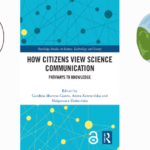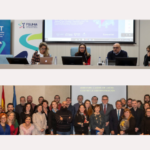MODeLiC and ScienceFlows launch NOSUM project to develop a personal kit that allows the detection of chemical submission drugs in beverages
ANA SERRA// NOSUM project, led by MODeLiC research group and in which ScienceFlows is a member has developed a system of colorimetric sensors that change color in the presence of γ-hydroxybutyric acid (GHB). GHB is a colorless, odorless compound with a slightly salty taste that causes the override of the will of the person who ingests it.
This compound, banned in Spain, has been present in at least 100 cases of sexual assault according to data provided by the National Police. The problem is that, in addition to being undetectable to the eye, GHB is metabolized very quickly. When victims recover, they do not clearly remember what happened and when they decide to go to a health center, the drug may not be detected. Furthermore, GHB is not detected in blood or urine in routine toxicology tests.
Test phase
The ultimate goal of NOSUM is to make a personal quick detection kit available to society, so that anyone can check on site if their drink has been adulterated.
The two research teams want it to be an easy-to-use kit adapted to the needs of young people. For this reason, this project will launch a trial period during this course in which 50 women between 18 and 28 years old will be recruited. The participants, selected from among all the volunteers will be students of the University of València. Each of them will receive 3 detection kits, as well as a short training session.
Their input will be crucial for the development of the project since, in addition to being able to use it when they consider, they will provide the research team with information about possible improvements.
In the event that any of the samples give a positive result, they will send the positive sample to the MODeLiC laboratory, where subsequent analyzes will be carried out to confirm the positive, so that the reliability of the detector can be guaranteed.
In this first phase, only women will participate since 90% of the victims of crimes in which there has been a chemical substance have been suffered by women, according to data from the Spanish Society of Emergency Medicine (SEMES).
Risk perception survey
This project also involves a study to evaluate the degree of acceptance of this type of devices by the youth. In addition, it is also intended to collect data on the perception of the risk of young university students to drugs by chemical submission.
You can follow the news of the project in twitter e instagram









